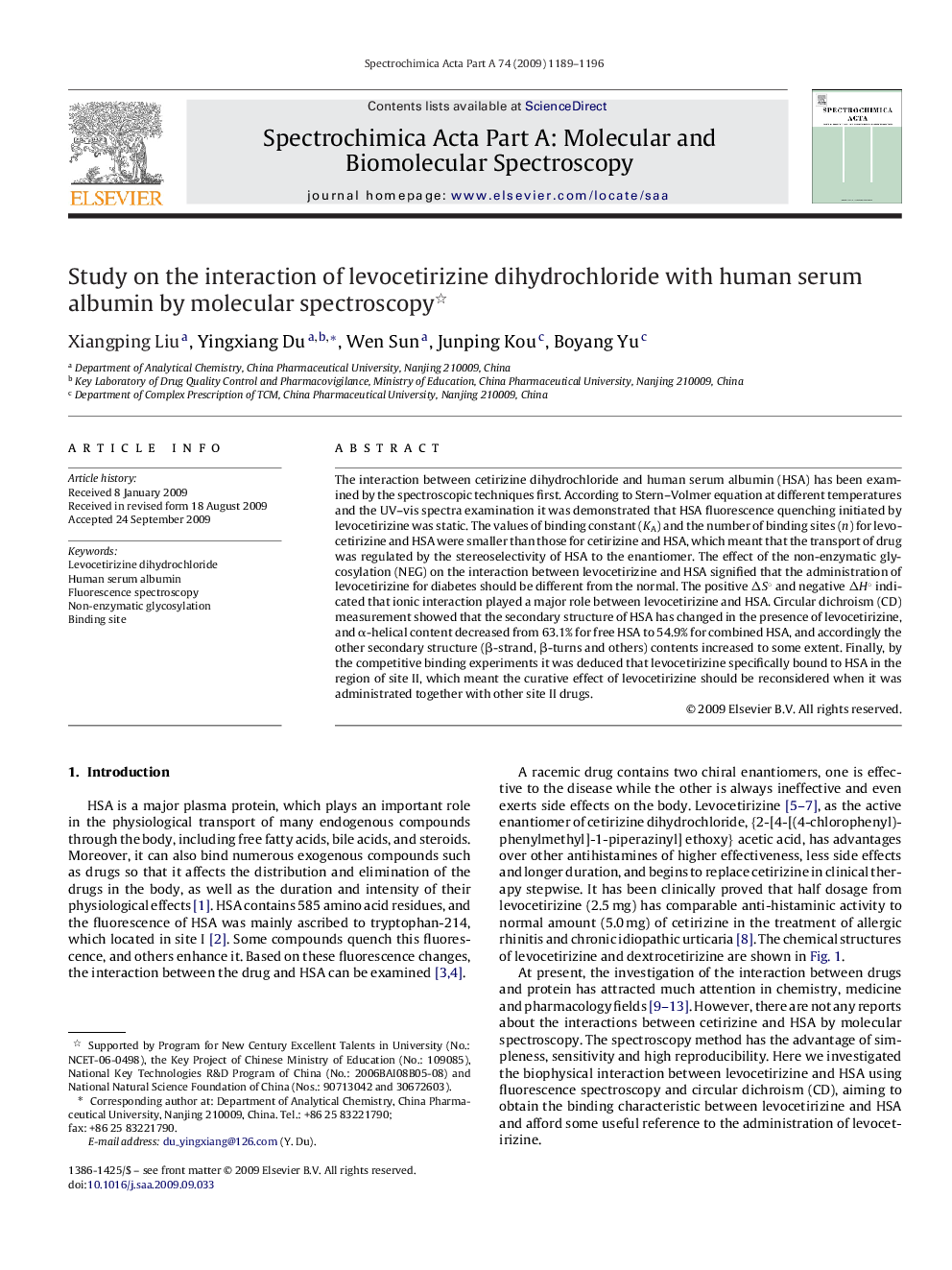| Article ID | Journal | Published Year | Pages | File Type |
|---|---|---|---|---|
| 1237367 | Spectrochimica Acta Part A: Molecular and Biomolecular Spectroscopy | 2009 | 8 Pages |
The interaction between cetirizine dihydrochloride and human serum albumin (HSA) has been examined by the spectroscopic techniques first. According to Stern–Volmer equation at different temperatures and the UV–vis spectra examination it was demonstrated that HSA fluorescence quenching initiated by levocetirizine was static. The values of binding constant (KA) and the number of binding sites (n) for levocetirizine and HSA were smaller than those for cetirizine and HSA, which meant that the transport of drug was regulated by the stereoselectivity of HSA to the enantiomer. The effect of the non-enzymatic glycosylation (NEG) on the interaction between levocetirizine and HSA signified that the administration of levocetirizine for diabetes should be different from the normal. The positive ΔS° and negative ΔH° indicated that ionic interaction played a major role between levocetirizine and HSA. Circular dichroism (CD) measurement showed that the secondary structure of HSA has changed in the presence of levocetirizine, and α-helical content decreased from 63.1% for free HSA to 54.9% for combined HSA, and accordingly the other secondary structure (β-strand, β-turns and others) contents increased to some extent. Finally, by the competitive binding experiments it was deduced that levocetirizine specifically bound to HSA in the region of site II, which meant the curative effect of levocetirizine should be reconsidered when it was administrated together with other site II drugs.
